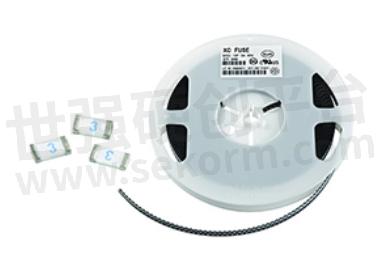How Many Types of Fuses are There?

There are many types of fuses, including classification by protection form, scope of use, volume, rated voltage, breaking capacity, and fusing speed.
Below is an introduction to the classification by type, which can be divided into current fuses: patch fuses, miniature fuses, plug-in fuses, and tubular fuses; Temperature fuse: RH square type, RP resistance type, RY metal case; Self recovery fuse: plug-in, laminated, patch.
1. Current fuse
Chip fuse. There are specifications such as 0805 and 1206, which use thin film technology to accurately control electrical characteristics. Due to its small size, it is an ideal choice for providing secondary protection for circuits in space limited applications, such as handheld portable electronic devices and various instruments and meters.
Insert a fuse. Commonly seen in automotive applications, sometimes also known as fork bolt fuses.
Tubular fuse. This is very common, especially in various power supply applications such as switching power supplies.
2. Temperature fuse
It is an irreparable disposable thermal protection device, available in RH, RF, RY, and other series. The product has a delicate appearance and structure, good sealing performance, sensitive and reliable operating temperature, small impact of current shock, and vibration resistance. It is mainly used in electric fans, rice cookers, electric fryers, disinfection cabinets, etc.
RH square temperature fuse. The appearance is a plastic square shell shape, with a block type temperature fuse, usually in a low melting point alloy type.
RP resistance type temperature fuse, usually of low melting point alloy type.
RY metal case temperature fuse. Using metal as the outer shell and organic chemicals as the heat sensing element, it has sensitive sensing, accurate action, sealed structure, and reliable performance. Used for rice cookers, hair dryers, electric motors, etc
3、 Self recovery fuse
This is a type of fuse that can automatically recover due to eXCessive current causing an open circuit in the circuit. It belongs to the multiple use type and is suitable for overload protection circuits.

Fig.1
- +1 Like
- Add to Favorites
Recommend
- Some Knowledge about Patch Fuses
- What Parameters Should be Noted for Patch Fuses
- Main Parameters for Selecting Patch Fuses
- Why Does the Resistance of Patch Fuses Become Large and Constant?
- Discussion on the Testing Method of Chip Fuses
- Introduction of Surface Mount Fuses
- Selection Techniques and Installation Process of Chip Fuses
- The Selection of Miniature Fuses
This document is provided by Sekorm Platform for VIP exclusive service. The copyright is owned by Sekorm. Without authorization, any medias, websites or individual are not allowed to reprint. When authorizing the reprint, the link of www.sekorm.com must be indicated.






























































































































































































































































































































































































































































































































































































































































































































































































































































































